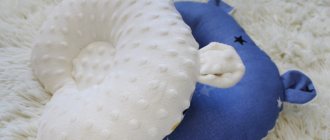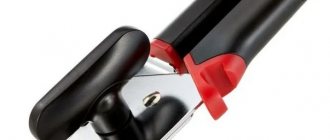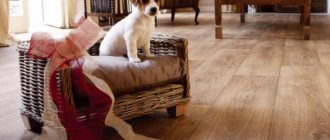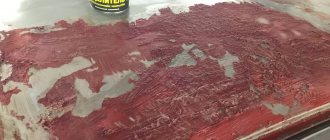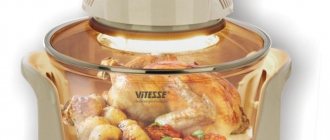Even if a cat or dog is domestic and does not leave the house for a walk, this does not mean that it is completely immune from such a scourge as ectoparasites. Fleas, ticks and lice eaters can get on an animal's fur and thus cause a lot of problems, because parasites are carriers of various diseases.
One way to protect your pet from harmful insects is an insecticidal collar. However, many owners doubt its effectiveness. We will try to figure out how effective it is.
Composition and operating principle of a flea collar for cats
The cat collar is impregnated with a special toxic substance (insecticide or repellent). Similar substances are often found in anti-flea shampoos, sprays and other flea and tick treatments. When the device is put on the cat’s neck, it begins to gradually release this impregnation. This leads to the destruction of existing parasites, and also protects the pet’s skin from insects.
The collar is effective only at the initial stage of infection (i.e., when ectoparasites have not yet harmed the cat’s health) or for prevention. For moderate to severe infestations, the use of shampoos or drops is recommended.
A safety collar for cats may contain the following components:
- Essential oil (such as peppermint or lavender). The scent of these oils repels parasites, preventing infection. However, for already infected cats this component is useless.
- Diazinon is an effective insecticide, but can cause a severe allergic reaction in a pet.
- "Propoxur" is a moderately toxic substance that helps repel insects.
- "Sevin." It is also a moderately toxic component and has an extended area of action.
- "Phenothrin." Often used by people as a drug for lice (lice). No less effective for pussycats.
- "Metropen" is a rather aggressive component that is contraindicated for kittens.
- "Imidacloprid" is an insecticide that has a nerve paralytic effect.
- "Fipronil" is a common insecticide, effective against most known ectoparasites.
Another component that is added to anti-parasitic collars for cats is permethrin. But due to its high toxicity, veterinarians rarely recommend its use.
Recommended Collars
BARS®.
The insecticidal collar is used to protect against fleas, ixodid ticks, lice, and lice. The polymer tape can be 80 cm long (for large dogs), 50 cm (for medium dogs) and 35 cm (for small dogs). The collar contains fipronil and diflubenzuron. The insect growth regulator (diflubenzuron) suppresses the growth of integumentary tissues of parasites, disrupts the development of larvae in eggs and molting, and prevents pupae from fully developing. Fipronil is an insectoacaricide. It is not absorbed into the systemic circulation. Its accumulation occurs in the epidermis, hair follicles and sebaceous glands. With the secretion of the sebaceous glands, the substances are distributed over the surface of the skin and provide a long-lasting protective effect. The period of use of the BARS® collar is up to 4 months. It is not recommended to use the collar for puppies under 2 months of age, sick and weakened animals, pregnant (in the last third of the term) and lactating females.
FitoDoc®
. The repellent collar is designed to repel ixodid ticks, fleas, and other insects. It comes in 3 sizes: 80 cm (for large breed dogs), 50 cm (for medium dogs) and 35 cm (for small dogs). The collar contains natural ingredients: essential oils of margosa, citronella, eucalyptus, tea tree, lavender. They also accumulate on the epidermis, hair follicles and sebaceous glands of the animal's body and provide a repellent effect. The FitoDoc® collar provides protection for 3 months against fleas and other insects and up to 5 weeks against ticks. The product should not be used on puppies under 2 months of age.
4 with a ponytail®
. This collar is designed to repel fleas, lice, lice, scabies and ixodid mites. It contains essential oils of citronella, lavender, geranium, peppermint, eucalyptus. Active substances accumulate in the sebaceous glands and have a detrimental effect on insects. The collars are available in three sizes: 35, 50 and 65 cm. The product has a high safety profile and is usually well tolerated by dogs of different ages and breeds, including sick and weakened animals, pregnant and lactating females. It should not be used only for puppies younger than 2 months and with individual intolerance to the active substances. When worn continuously, the collar provides protection against insects for up to 3 months and against ticks for 4 weeks.
Types of anti-parasitic collars
All anti-flea and tick collars are classified depending on the principle of their action:
- The first group is biocollars. They contain natural ingredients - plant oils that repel insects. For example, this is celandine, mint or lavender.
- The second group is insecticidal accessories. They are impregnated with a solution toxic to ectoparasites.
- The third group is radiating accessories. They transmit electromagnetic waves into the surrounding space that repel insects.
- The fourth group is ultrasonic devices. As the name suggests, they produce high-frequency sounds that can only be heard by insects.
Advantages and disadvantages
Like any pest control product, there are pros and cons to cat flea and tick collars.
The positive aspects include:
- Ease of use. Before putting on the accessory, your pet does not need to be thoroughly combed or bathed. You just need to put it on the cat’s neck, adjust the length and cut off the excess.
- Safety. Cases of poisoning, which are rare but have happened to cats, were 90% associated with the wrong choice of collar. Each model contains a certain dose of insecticide, designed for a particular weight of the cat. The most natural option would be bio flea collars for cats.
- Models have been developed for pregnant or lactating kisuls.
- Range. In any pet store or veterinary pharmacy you can find an option taking into account the characteristics of the kitty (weight, age, cat health).
- Highly effective as a prophylactic agent.
- No smell. Odorless flea collars for cats will only act on parasites, without interfering with the pet and its owner.
- Some anti-flea accessories indirectly protect the cat from infection with any helminths: many ectoparasite insects are carriers of worms. And when scratching or picking fleas, helminth eggs can enter the cat's body.
If we consider the disadvantages of anti-flea accessories, we can highlight the low effectiveness as a therapeutic device. They are ideal for preventing infection, but not for treating it. However, at the very initial stages, you can rid your cat of ectoparasites using a collar. Other disadvantages are:
- limited period of use. Once all the impregnation has evaporated from the collar, it becomes useless. Usually the impregnation lasts for at least one month. Some devices last even longer;
- low but present possibility of intoxication. But it increases only if the accessory is incorrectly selected and used.
Advantages and disadvantages of the product
Dog collars
A collar is a popular way to protect animals from parasites. Before purchasing, be sure to familiarize yourself with the advantages and disadvantages of this method.
Advantages of the collar:
- Availability. You can buy it in any store, and the wide price range allows you to find a copy for any income.
- Safety. High-quality collars are not capable of harming the animal, so even a small puppy can use it.
- Efficiency. The insecticides used in production have a wide spectrum of action, therefore they can protect not only from ticks, fleas, but also from other parasites.
- Aesthetics. A large selection of designs will allow you to choose a collar to suit every taste.
- Hygiene. Unlike drops or other drugs, the collar does not pollute the dog’s fur or leave marks on furniture or other objects. There is no need to wait for the product to work.
Particular attention should be paid to the few disadvantages of the method of protection against ticks and fleas using a collar:
- Possibility of allergies. It is extremely rare and appears already in the first hours of wear. During this time, you should carefully monitor the dog's behavior. The reaction is mild and does not last long.
- Limited validity period. The average duration of effective use of the product is 2-3 months, after which it requires replacement.
- Low percentage of protection for large breeds. The effect of the substance contained in the collar applies only to the front part of the dog. A tick or flea can easily parasitize other areas.
How to use the collar
All models are equipped with a special clasp and are adjustable in length. Do not place the device on the cat’s neck too tightly. It is important that it does not press or sting the cat, or make it difficult for him to breathe. A person's finger should fit between the kitty's neck and the product. The tip that remains must be cut off. Otherwise the cat will try to pull it or lick it.
Basic rules for using a flea collar for cats:
- You need to print the packaging immediately before putting the accessory on your cat. You need to check expiration dates before purchasing.
- While wearing an anti-flea product, the kitty should not be treated with other anti-parasitic agents. This will lead to an overdose, since each of the products contains toxic insecticides. In this case, the pet faces serious poisoning.
- If your cat already has fleas or other ectoparasites, you need to treat him in advance. And only after successful therapy can the product be used as a preventive measure.
- Follow the instructions strictly. It is prohibited to purchase flea accessories for your cat that are designed for other animals (for example, dogs). The dosage in each product is calculated individually, taking into account body weight, age and breed.
- Before putting a natural impregnated bio-collar on your cat, you should definitely consult a veterinarian about your pet’s allergies.
Possible negative consequences
As one of the forms of using an insecticide against fleas, an anti-flea accessory can cause the following troubles:
- Allergy to flea collar . This phenomenon is not uncommon when using an antiparasitic accessory. Allergies most often occur when permethrin and tetrachlorvinphos are used as impregnations. The reaction may manifest itself in the form of itchy skin, sneezing, and watery eyes. In acute cases, convulsions, loss of coordination of movement, depression, and loss of consciousness are possible. Allergy symptoms usually appear 1 to 2 hours after use.
- Poisoning . Symptoms of poisoning by insecticides contained in the collar are similar to those of an allergic reaction. But in case of intoxication, the first signs appear 5 - 6 hours after using an accessory soaked in chemicals, and in case of allergies - in the first hour.
It is impossible to answer unequivocally the question of whether a flea collar is harmful. Allergic manifestations, poisoning and chronic intoxication certainly have a negative impact on the pet’s health. It is also recommended to periodically check the condition of the pet’s skin during the entire period of use of the protective device.
Contraindications
Contraindications to the use of anti-flea accessories are:
- weakened health of the cat, weak immunity;
- old age of the cat;
- the presence of serious illnesses;
- young age. A kitten under two months of age is prohibited from wearing the product;
- pregnancy. For cats bearing offspring, biomodels have been developed that do not contain poisons or toxins.
Manufacturers
These products for fleas in cats are widely represented on the modern veterinary market. The most effective are considered to be:
This product will be effective for up to two months.
- "Doctor Zoo" The Doctor Zoo bio flea collar from a domestic manufacturer has proven itself to be inexpensive, but quite effective. However, it is worth noting that the service life of the product is no more than 2 months, after which it must be replaced with a new one.
- "Leopard". The active substance, fipronil, provides reliable protection of the animal from parasitic infestation for 5-6 months. The product should not be worn by pregnant or lactating cats or kittens under 6 months.
- "Celandine". Anti-tick collar for cats, the active ingredient of which is permethrin. In addition to ticks, the toxin reliably destroys fleas and lice. The product is suitable for a cat that has reached the age of 4 months, but it is contraindicated for pregnant and lactating pets.
- "Befar". This European product contains a powerful flea insecticide that protects the animal from invasion for six months. This brand of flea collar is not suitable for kittens, as well as cats bearing and nursing offspring.
- "Dana-ultra". An effective combination product that can be used by pets from 2 months of age, but this product is not recommended for productive cats and kittens.
Can an anti-parasitic flea collar be used on a kitten?
Tiny kittens still have weak immunity, so you need to protect your baby from the negative influences of the environment. Infection with parasites is very dangerous for a kitten, because its growing body does not yet know how to fight diseases. And modern insecticidal collars are quite toxic for him.
The best option for kittens is bio-flea collars, which do not contain poisons or chemicals. The impregnation consists only of a specific essential oil.
Rating of the best tick and flea collars for cats
Modern pet stores sell many anti-flea models. And sometimes choosing the right collar is quite difficult. There are top best flea collars for cats in two different segments - budget and expensive.
Budget collars
The budget segment includes good collars, impregnated with inexpensive insecticides or natural oils. The models discussed below are almost in no way inferior to their expensive counterparts.
GOOD Cat
Accessory based on natural substances. It has a repellent effect, i.e. it scares away parasitic insects. “GOOD Cat” will save you not only from fleas, but also from other ectoparasites. The main component in the impregnation is geranium oil. The natural plant is safe for animals. Kittens from two months can use the flea accessory. This therapeutic collar for cats can be used after consultation with a veterinarian, since there is a possibility of allergies in the cat.
Agrovet protection
Protects the cat from fleas and flying insects. Also, like the previous model, it is a repellent, that is, it scares away bloodsuckers, but does not destroy them. The impregnation of the Agrovetzaschita device is based on eucalyptus oil, as well as lavender and citronella oils. Suitable for pregnant cats and cats with weakened immune systems.
Gamma
Another budget repellent that protects your kitten from fleas. The Gamma devices contain extracts from natural plants - cloves, tea tree.
Animal Play
A high-quality product, the impregnation of which consists of an extract of cloves and chamomile. Like other natural biocollars, they are allowed for use only after consultation with a veterinarian.
Celandine
The basis of the Celandine collar is diazinon, which has a nerve paralytic effect on lice eaters, fleas and other external parasites. As soon as the activity of the insect’s nervous system is blocked, it dies. “Clandestine” is allowed to be used by cats older than 4 months, as well as for pregnant cats (but only after consultation with a veterinarian). Impregnation does not affect the offspring the cat bears.
Expensive collars
This segment is characterized by higher quality of product production and increased efficiency. They are able to maintain an antiparasitic effect longer. Another significant difference is the ability not only to repel fleas, but also to destroy them.
Beafar
An anti-parasitic collar that quickly kills fleas and ticks, and also actively fights ear mites and scabies. The active component - tetrachlorvinphos - is a contact insecticide. It is safe for all pets and toxic to arthropods. Within a couple of seconds after contact with it, a flea or tick is paralyzed. Age limit is six months. That is, kittens under six months old cannot wear Beafar.
Dana Ultra
The product contains three active ingredients: fipronil, ivermectin and pyriproxyfen. Their combined action rapidly depresses the nervous system of insects and blocks the reproductive system. Until the age of two months, you cannot put on the Dana Ultra kitty.
Foresto
The main substances in the impregnation are flumethrin and imidacloprid. They are direct acting insecticides. The first one destroys ticks, and the second one destroys fleas. "Foresto" affects ectoparasites at any stage of their development. Cannot be worn on cats under 2.5 months.
Inspector
An effective collar that saves a cat from fleas, blood-sucking insects and worms. In addition, “Inspector” destroys ear mites, scabies mites, and lice mites. The main components coincide with the composition of the Dana Ultra models - fipronil, ivermectin and pyriproxyfen.
Neoteric
A very effective collar that is capable of destroying all kinds of ectoparasites. In addition, Neoterica prevents re-infection. At the same time, it works as a repellent, scaring away flying bloodsuckers from the cat. “Neoterica” is the safest remedy for adult cats, but it is not advisable to use it on pregnant or overly weakened cats. This good anti-parasite collar for cats can be used from three months of age.
Collar "Bars" for cats
Bars products for protecting pets from parasites occupy a special place among similar drugs. Domestic made sure that the drugs were highly effective and accessible to all segments of the population.
The product contains an active ingredient – fipronil. It inhibits the functioning of the nervous system of parasites, resulting in paralysis and death of the insect. The accessory also provides a protective barrier for 4-5 months.
The inside of the Bars collar is coated with a chemical composition. Upon contact with the skin of an animal, the release of active substances begins, which negatively affect parasites and are safe for a cat or dog.
Useful anti-parasitic accessory
When choosing an antiparasitic agent for a cat, you need to rely on what goal the owner is pursuing. If the cat is already infected with fleas, lice eaters or other ectoparasites, then models with contact insecticides are suitable. If your cat needs infection prevention and he never leaves the apartment or house, it is enough to purchase a biocollar based on natural plants. In this case, you need to take into account the cat’s body weight, its age and the current state of the cat’s health. Only strict adherence to the instructions and rules will make it safe to use this useful accessory.
Can the collar be used on a pregnant cat?
The Bolfo flea collar can be used on pregnant cats
Despite the widespread advertising and popularity of the protective accessory, veterinarians are often asked questions about its effect on the animal’s health, side effects, and use in a particular physiological condition. And some of the most popular ones are about wearing while expecting offspring.
- Is it possible to put a flea collar on a nursing cat? The use of this type of protection for a nursing female is not recommended by both manufacturers and veterinary specialists. The insecticide used to impregnate the tape has a long-lasting effect, which can cause severe poisoning in small kittens and lead to the death of offspring. To treat a nursing cat against blood-sucking insects, there are specially developed preparations, for example, “Frontline” drops.
- Is there a flea collar available for sale for a pregnant cat? Almost all insecticide-impregnated tapes are not recommended for pregnant cats. Veterinary specialists prefer collars based on essential oils to protect an animal in an interesting position. They are less dangerous in terms of intoxication, but will not protect against allergic manifestations.
- Insecticidal tape “Bolfo” can be used for pregnant pets, but only after prior consultation with a veterinarian who will assess the health of the expectant mother.
The question of which flea collar is best is difficult to answer even for a veterinarian with extensive experience. In any case, you need to choose products from well-known companies that are responsible for their pet products, buy protective equipment from trusted veterinary pharmacies, and do not skimp on cheap Chinese counterfeits.
Similar articles
- How fleas reproduce in cats: how many of them live on...
From it you will learn about the signs of a parasite in a pet, effective means for getting rid of fleas, such as shampoos, drops on the withers, flea collars, sprays. … For cats. Flea dermatitis in a cat. Read more - How to remove fleas from a cat, how to get rid of them (wash, anoint...)
We recommend reading the article about how a flea collar works. From it you will learn about the principles of operation of flea collars for cats, types of devices, and the possible negative consequences of their use... Read more
- How to wash a cat if he is afraid, how to do it...
The most popular are regular liquid shampoos for washing domestic cats. ... Since there are going to be water procedures, it’s a good idea to figure out how to wash your cat for fleas in order to combine both pleasant and useful things. Read more
- Where does a domestic cat get fleas: what they look like, what...
How does a flea collar for cats work and is it real... How to treat ear mites in a cat: what is it, where does it come from... Why does a cat's hair fall out, it comes out in clumps... Read more
- A cat has tubercles on its ears: how to treat it, what to do if...
There are quite a lot of parasites that terrorize pets. If a cat has bumps on its ears, how to treat the beauty? ... We recommend reading the article about how a flea collar works. Read more
Questions and answers
What is the best flea and tick collar for cats?
It all depends on the age and health of the cat. If this is a small kitten, pregnant, elderly or sick cat, it is recommended to use natural biocollars. They consist only of natural oils. For healthy adult cats, you can buy products impregnated with insecticide.
Are there safe collars for cats?
If chosen and used correctly, any anti-parasitic collar will be safe for the cat. Poisoning and severe intoxication of a pet in almost 95% of cases occurred due to incorrect actions of the owner. It is very rare, but it is possible for a cat to develop an allergy. Therefore, before using any product, you should visit a veterinarian.
Types of flea collars
In fact, collars can act not only on fleas, but also on lice, lice, ticks and other external parasites. All existing flea collars for dogs can be divided into 3 large categories: destructive, repellent, ultrasonic.
Insectoacaricidal (destroying)
These collars are most effective because their action is aimed at destroying parasites. The active substances kill adults and may interfere with the growth of larvae. The validity period of the product depends on its type and is usually 2–7 months. To maintain effectiveness, the collar should not be removed from your pet, except when the animal needs to be washed. Sometimes, before the first use, it is necessary to stretch the collar a little to activate the substances (the need for this action should be indicated in the instructions).
Repellent (scaring)
Their task is to repel fleas and other blood-sucking insects. The main active substances are usually essential oils and extracts. They have a higher safety profile, but their effectiveness is lower than that of insecticides. As a rule, biocollars are used in conjunction with other, more effective means.
Most collars are universal: they are suitable for both adult dogs and puppies. Some manufacturers are developing products for children and for dogs of small and large breeds. Generally, flea collars of any type are not recommended for puppies under 2 months of age.
Ultrasonic
Theoretically, they produce high-frequency sounds that repel arthropods. The effectiveness of such devices has not been confirmed.


